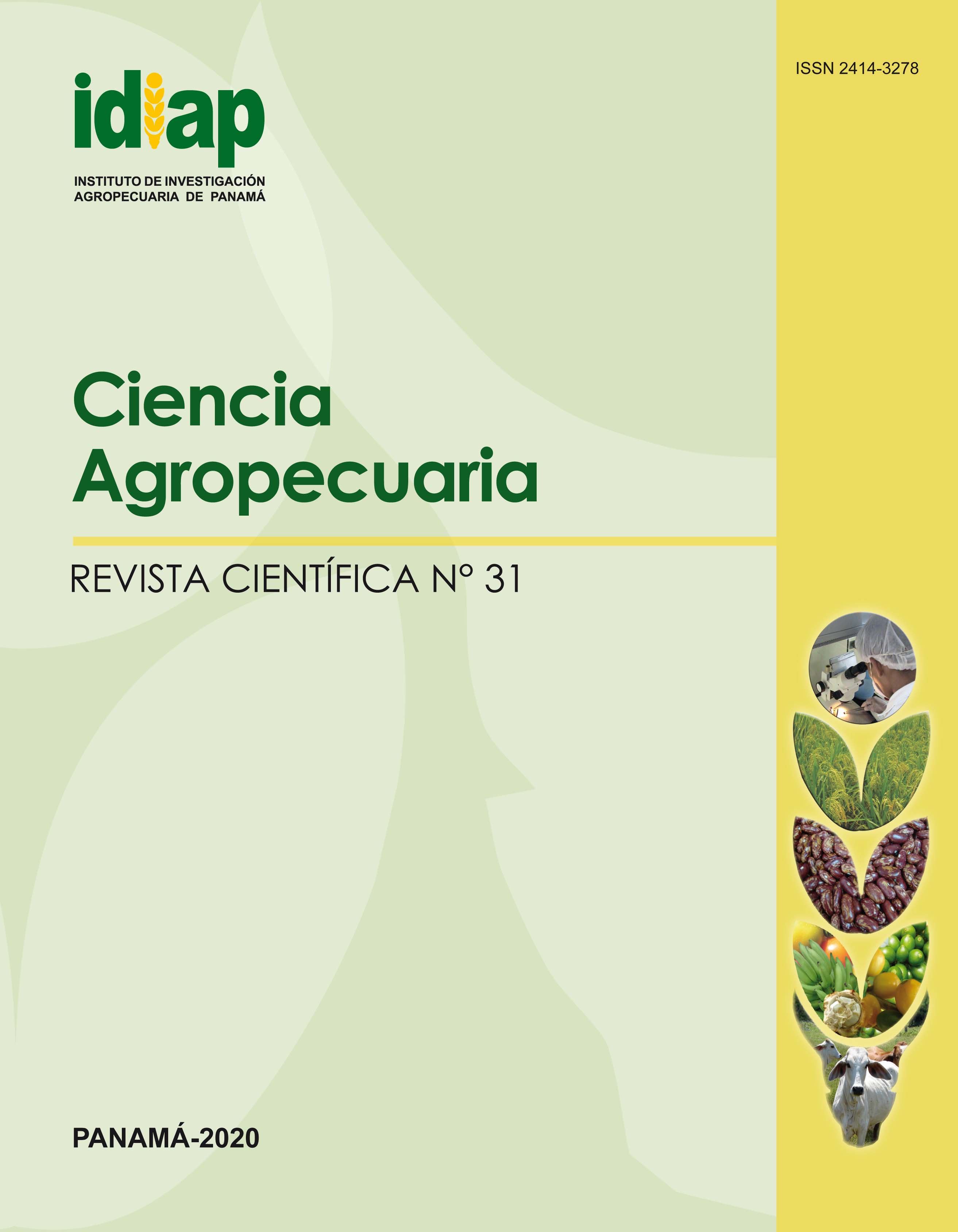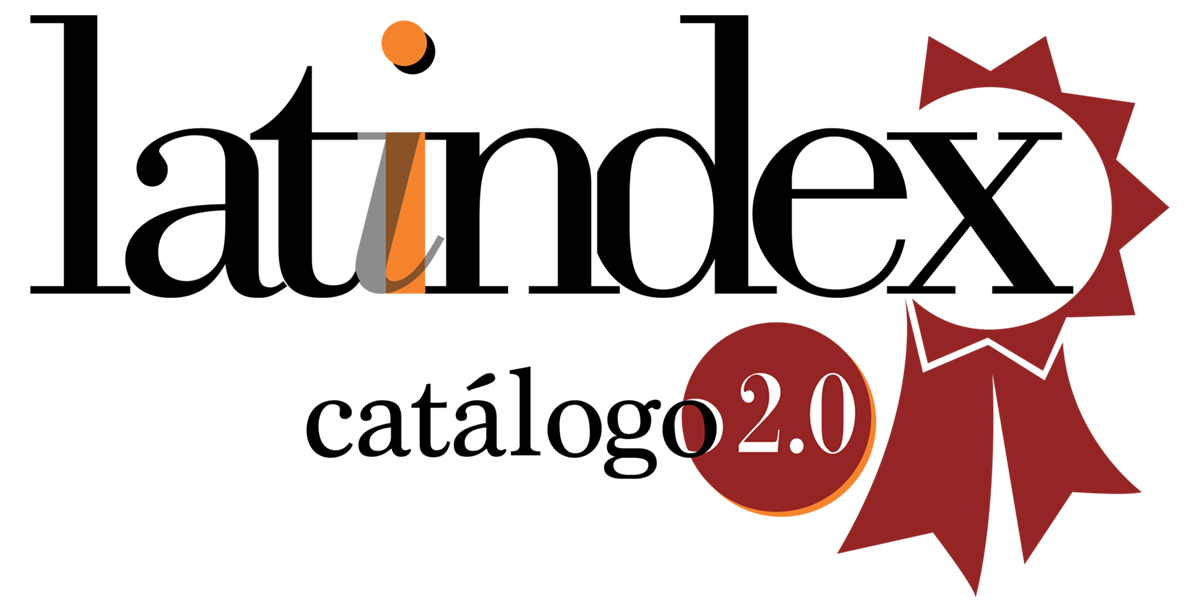INDICADORES DE SOSTENIBILIDAD SOCIAL Y TIPIFICACIÓN DEL SISTEMA VACA-TERNERO Y DOBLE PROPÓSITO EN GUALACA, PANAMÁ
Resumen
Los objetivos de este estudio fueron presentar una propuesta como herramienta para la evaluación de la sostenibilidad social, identificar variables de los indicadores de sostenibilidad social, tipificar y caracterizar las fincas del sistema vaca-ternero (SVT) y doble propósito (SDP) de Gualaca, Chiriquí. Se seleccionaron siete fincas del SVT y seis del SDP. Se aplicó una encuesta estructurada y analizada con la metodología de Ríos (2010). Se consideraron 24 variables (Xi) y conformaron 12 variables determinantes (VISSi) de los indicadores de sostenibilidad social. Las VISSi seleccionadas presentaron CV>25%. A cada Xi se asignaron valores (VAi) mediante escalas de Likert. Con las VISSi se calcularon los indicadores de sostenibilidad social, Cindi para SVT y Lindi para SDP y el General (VistC y VistL, respectivamente). Con las variables relativizadas (rjVISSi) se realizaron análisis de Componente Principal (ACP) y Conglomerado (AC). Los Cindi y Lindi se sometieron a un análisis de varianza. Se identificaron cuatro y tres factores para SVT y SDP, respectivamente. El AC agrupó las fincas en tres grupos en ambos sistemas de producción. El rango de Cindi fue 0,00 a 0,25 en fincas SVT y de Lindi de 0,00 a 0,22 en SDP. Mayor VistC fue 0,89 de la Finca8 y en VistL fue 0,82 de la Finca3. El análisis de varianza mostró diferencias (P<0,05) entre grupos del SVT en Cind7, Cind11 y VistC, pero en SDP fue en Lind8 y Lind11. Estos indicadores son los primeros generados en Panamá y difieren de los propuestos por Ríos, 2010.
Descargas
Citas
ADEC INNOVATIONS. 2019. What is social sustainability. American Data Exchange Company Innovations. 4p. CA, USA. www.asg.adec.innovationes.com/about-us/faqs/what-is-social-sustainability/ (consultado 4 may. 2019).
Aldenderfer, M.S., and R.K. Blashfield. 1984. Cluster analysis. SAGE Publications, Inc. 1st Print. Beverly Hills, CA. USA. 88p.
Alkan Olsson, J., C. Bockstaller, L. Stapleton, F. Ewert, R. Knapen, O. Therond, G. Geniaux, S. Bellon, T. Pinto Correira, N. Turpin, and I. Bezlepkina. 2009. A goal-oriented indicator framework to support integrated assessment of new policies for agri-environmental system. Environmental Science Policy. 12:562-572.
Binder, C.R., G. Feola, and J.K. Steinberger. 2010. Considering the normative, systematic and procedural dimensions in indicator-based sustainability assessments in agriculture. Environmental Impact Assessment. 30:71-81.
Boogaard, B.K., S.J. Oosting, B.B. Bock, and J.S.C. Wiskerke. 2011. The social-cultural sustainability of livestock farming: an inquiry into social perception of dairy farming. Animal. 5:1458-1466.
Carmona, F. 2014. Un ejemplo de Análisis de Componentes Principales (ACP) paso a paso. http://www.ub.edu/stat/docencia/Mates/ejemploACP.pdf (consultado 30 sep. 2020).
De León-García, R.H., G. Thomas, y O. Castillo. 2018. Caracterización y tipificación de pequeñas fincas doble propósito de la provincia de Bocas del Toro-Panamá. Ciencia Agropecuaria. 29:13-40.
Escobar, G. 1995. Desarrollo metodológico para la aplicación del enfoque de sistema en América Latina. p. 99-109. En: Investigación con enfoque de sistemas en la agricultura y el desarrollo rural, editores J.A. Berdegué y E. Ramírez. Red Internacional de Metodología de Investigación de Sistemas de Producción (RIMISP). Centro Internacional e Investigación para el Desarrollo (CIID). Santiago de Chile, Chile.
Everitt, B. 1979. Unresolved problem in cluster analysis. Biometrics 35:169-181.
Gómez-Limón, J.A., and G. Sánchez-Fernández. 2010. Empirical evaluation of agricultural sustainability using composite indicators. Ecological Economy. 69:1062-1075.
Gras, R. 1989. Le fait technique en agronomie: activité agrícola, concepts et méthodes d’étude. Editions L’Harmattan, París. France.
Google Earth. 2020. Panamá – Google My Maps. https://www.google.com/maps/d/embed?mid=1jCP67RFnnXZxW0IGvFPDgRIIn9U&ie=UTF8&msa=0&II=9.35286800000002... (consultado: 24 dic. 2020).
Hair, J.F., R.E. Henderson, R.L. Taham, and W. Black. 1998. Multivariate data analysis. 5th Ed. Prentice Hall College Division. New York, NY. USA. 768p.
Hammond, M. 2020. Escala de Linkert: qué es y cómo utilizarla. Gestión de Clientes. Lectura de 9 minutos. Hubspot. 768p. www.blog.hubspot.es/service/escala-likert (consultado 18 sep. 2020).
Harrington, L. 1995. Sustainability in perspective: strengths and limitation of farming system research in contributing to a sustainable agriculture. Journal of Sustainable Agriculture. 5:41-59.
Janker, J., and S. Mann. 2018. The social dimension of sustainability in agriculture. Working paper. https://researchgate.net/publication/32263634 (consultado 4 jun. 2019).
Janker, J., S. Mann, and S. Rist. 2019. Social sustainability in agriculture. A system-based framework. Journal of Rural Studies. 65:32-42.
Johnson, R., and D. Wichern. 1998. Applied multivariate statistical analysis. 4th Ed. Prentice Hall College Division. New York. NY. 799p.
Kim, J.O., and C.W. Mueller. 1978. Factor analysis. Statistical methods and practical issues. SAGE Publications, Inc. Beverly Hills, CA. USA. 87p.
Lebacq, T., P.V. Baret, and D. Stilmant. 2013. Sustainability indicators for livestock farming. A review. Agronomy Sustainability Development. 33:311-327.
Likert, R. 1932. A technique for the measurement of attitude. Archives of Psychology. 22:140-155.
Meul, M., F. Nevens, D. Reheul, and G. Hofman. 2007. Energy use efficiency of specialized dairy, arable and pig farm in Flanders. Agricultural Ecosystem and Environment. 119:135-144.
Pannell, D.J. 1999. Social and economic challenges in the development of complex farming systems. Agroforestry System. 45:393-409.
Rigby, D., P. Woodhouse, T. Young, and M. Burton. 2001. Constructing a farm level indicator of sustainable agriculture practice. Ecological Economics. 39:463-478.
Ríos, G.P. 2010. Propuesta para generar indicadores de sostenibilidad en sistemas de producción agropecuaria para la toma de decisiones. Caso: Lechería especializada. M.Sc. Tesis de Graduación. Facultad de Minas. Universidad Nacional de Colombia. 107p.
Sadock, W., F. Angevin, J.E. Bergez, C. Bockstaller, B. Colomb, L. Guichard, R. Reau, and T. Doré. 2008. Ex ante assessment of the sustainability of alternative cropping systems: implications for using multi-criteria decision-aid methods. A review. Agronomy Sustainability Development. 28:163-174.
Steel, R.G.D., and J.H. Torrie. 1980. Principles and procedures of statistics: A biometrical approach. 2nd Edition. McGraw-Hill Book Company. New York, NY. USA. 633p.
ten Napel, J., A.A. van der Veen, S.J. Oosting, and P.W.G. Koerkamp. 2011. A conceptual approach to design livestock production systems for robustness to enhance sustainability. Livestock Science. 139:150-160.
van Calker, K.J. 2005. Sustainability of Dutch Dairy farming system: a modeling approach. Dissertation, Wageningen Universiteit, Wageningen, Germany.
van Calker, K.J., P.B.M. Berebtsen, I.J.M. de Boer, G.W.J. Giesen, and R.B.M. Huirne. 2007. Modelling worker physical health and societal sustainability at farm level: an application to conventional and organic dairy farming. Agricultural System. 94:205-219.
van Cauwembergh, N., K. Biala, C. Bielders, V. Brouckaert, L. Franchois, V. García Cidad, M. Hermy, E. Mathis, B. Muys, J. Reijnders, X. Sauvenier, J. Valckx, M. Vanclooster, B. Van der Veken, E. Wauters, and A. Peeters. 2007. SAFE-a hierarchical framework for assessing the sustainability of agricultural systems. Agricultural Ecosystem Environment. 120:229-242.
van der Werf, H.M.G., and J. Petit. 2002. Evaluation of the environmental impact of agricultures at the farm level: a comparison and analysis of 12 indicator-based methods. Agricultural Ecosystem and Environment. 93:131-145.
Ward, J. 1963. Hierarchical grouping to optimize an objective function. Journal of the American Statistical Association. 58:236-244.
Esta obra está bajo una licencia de Creative Commons Reconocimiento-NoComercial-CompartirIgual 4.0 Internacional.






